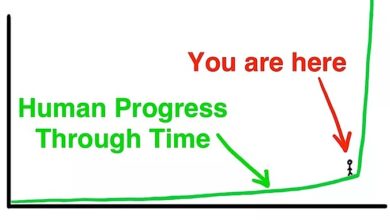Advanced Analytics- The Race we all want to run

Analytics is being redefined every day by businesses so it is hard to write something on present analytics trends these days as it is a pre-assumption that writing everything in a single study or paper would not be ever possible.
General business consensus, media buzz, and industry and investment analysts largely agree that analytics is top business priority for the foreseeable future. That’s good news because there is lot of business value to be actualized for Data Sciences teams. What’s not so good news is that large number of companies and Data Science teams are only dabbling in Analytics. Many are still not able to reap the benefits of their initial analytics investment, particularly in churning insights that can lead to smarter decision-making across enterprise. But a few companies who have been able to cross that initial hump, should really be thinking about Advanced Analytics. The transition is not the easiest of them all, but it is doable nonetheless.
Success of any Advanced Analytics effort has strong correlation (perhaps the only instance where correlation and causation go hand-in-glove) with the ability of articulating the Strategic framework and road map for integrating advanced analytics into their business. This critical task of articulating the Strategic framework should be assigned to Analytics Generals who have the belief, power to make decisions, allowed to experiment and above all can be creative with data, people and technology all at the same time. Thinking of anecdote Advanced Analytics perhaps is the only war-setting where soldiers, weapons and generals are equally riveted and immersed. If done well out comes fascinating business results and performance.
Look at Creative Data Science teams have made rapid progress even in some of the conventional small scale industries and business applications like small drug stores to predict stocks, farms to predict and improve yield, manufacturing assembly lines to predict defect and quality, to more unusual applications like finding empty slots in the parking areas, save rare animal species by analyzing feed from motion sensitive cameras, identify rare food pairings that would not be possible for chefs to discover otherwise using unstructured data of recipes, chemical compounds, food pairings, academic studies, tweets, and books, emotion measurement technology using bio-metric data such as facial recognition and even analyzing terabytes of data produced by F1 cars in near real-time basis looking for adjustments that could win or lose a race. It is just mind-boggling how much progress deep learning and advanced analytics has made in some of the fields.
Offerings and applications in the advanced analytics space are rapidly evolving and sometimes are even defining Next Best Strategy for an organization. What remains essential at the core of all this is Strategic Framework to increase the velocity, and thus momentum, of Advanced Analytics effort. But not all organizations are created equal, so their framework should also be based on needs of organization and business.
Here are some of the trends emerging in the advanced analytics space today (not necessarily in the same order) that can help teams and organization pick the right strategy for themselves. Please keep in mind that most of these trends are an academics in themselves because they are so vast, but it gives you an idea about essentials of Strategic Framework for Advanced Analytics.
1. Integrated Hardware and Software for Analytics data loads.
Customers of advanced analytics are increasingly looking for hardware that is pre-integrated and optimized so that analytics-downtime can be reduced substantially. Customers can benefit from the increased reliability, scalability and speed of an integrated system. Big corporations like SAP, SAS & IBM are already in development cycle to create appropriate solutions, so there is no dearth of solution providers.
2. Open Source Programming Language is Becoming epidemic.
An open source programming language for computational statistics, visualization and data is becoming an omnipresent tool in advanced analytics offerings. Be it R or Python, they are all evolving rapidly and one of them has be made a language-of-choice. Best part is they are cost effective and intelligence intensive.
3. Visual Interfaces are Making Advanced Analytics More Accessible to Business users.
Data scientists are few and far between on the ground, and small and mid-sized enterprises in particular are struggling to create experienced analytics teams due to a lack of budget. At the same time, analytics is working its way into decision-making at all levels of the enterprise, making it more important than ever that business users be able to access data insights. That combination has advanced analytics vendors firmly focused on offering features that make their platforms easier for business users to use. E.g.: SAP is focusing on predictive analytics & others focus on decision tree interfaces.
4. Real-Time Data integration is becoming popular.
A recent development in the Stream Processing industry is the invention of the “live data mart” which provides end-user, ad-hoc continuous query access to this streaming data that’s aggregated in memory. Business user-oriented analytics tools access the data mart for a continuously live view of streaming data. A live analytics front-end slices, dices, and aggregates data dynamically in response to business users’ actions, and all in real time.
Use cases where stream data has good application:
-
Network monitoring
-
Intelligence and surveillance
-
Risk management
-
E-commerce
-
Fraud detection
-
Smart order routing
-
Transaction cost analysis
-
Pricing and analytics
-
Market data management
-
Algorithmic trading
-
Data warehouse augmentation
It definitely doesn’t hurt but see the order of priority depending on the business requirement and development effort.
5. Data Visualization Is Becoming a Business household:
Data visualization is taking on an even more important role within organizations as they become flooded with streaming data, social media data, machine data and other large volumes of structured, semi-structured and unstructured data. Visualizations are necessary to help analysts uncover insights that would simply be impossible to spot in data tables, spreadsheets and charts. A platform like Tableau or Micro Strategy can also make enterprise wide insights delivery very easy and scalable. It is one of the must-have in your Strategic framework.
6. Organizations Are Infusing Big Data Analytics into All Decision-Making
It is no longer enough for analytics to be managed solely through a statistics or data analysis department. Organizations want to make analytics part of the decision-making process across all areas, including marketing, sales, operations, finance and human resources.
To improve customer engagement to optimize outcomes across all these functions, companies want to include more variety of data in their analysis. For example, data types ranging from machine-generated and other sensor data to mobile and financial data feeds and social media data are typically included in big data analysis.
7. On-Cloud Analytics Services Are Increasingly Becoming Popular:
Advanced analytics vendors are increasingly turning to the cloud to deliver analytics capabilities in a more affordable way, making them practical beyond the large enterprises able to afford the significant expense of complex, on premise solutions. On-cloud solutions have their own limitations, however evolving they are. But if you have already done the analytics ground work it can be very productive and in quick time too.
8. Trainings center boom for hot stamping technologies:
One of simple trend when it comes to hot stamping technologies is when training curriculums make offering of such technologies. Universities, private training academies spring training programs for individuals and corporate groups.
Let Science and Scientists Guide the Business
With such technology advancement and advent of so many offerings, it’s essential to make any sense of these jargons. Reason enough why scientists and the sciences have a new importance in the business world today. Curiosity (Why?) should be the fabric of all data science teams and as long as analysts can stick to it, they will have a way out for any complex business problem (What?) and potential solution thereof (How?). Please create your data science teams very thoughtfully and tastefully.
Predictive analytics is creating its own special place in the operating business, however it is still limited to very few. Lately concept of sales and marketing automation has produced some successes in high-tech companies, however none of the automation solutions have been able to fill the gap between passing the baton between sales and marketing and there is where predictive analytics has great potential.
When these get align predictive analytics can allow marketers to target the best possible prospects with the most compelling offers with surgical accuracy. It lets salespeople know how and when to communicate with those prospects based on systems that leverage every imaginable variable that impacts a customer’s decision to buy.
What is in for the predictive industry in future?
Funding generosity for predictive analytics companies.
One of the most generously funded areas in technology industry is predictive analytics. Depending on your perspective that is either a frothy bubble just waiting to burst or an indication of a massive market opportunity that people are jumping to get on board with. Top funding companies in India are Sequoia Capital, IDG, NVP, TA Associates and Fidelity growth partners are investing in companies with such background. Few companies to look out in 2016 are machine pulse, Infinite, Aureus, MineWhat, EigenRisk and more.
The report “Predictive Analytics Market by Business Function, Applications (Risk Management, Operations Management, Sales Management, Supply Chain Management, Workforce Management), Organization Size, Deployment Model, Vertical, & by Region – Global Forecast to 2020”, the global predictive analytics market to grow from USD 2.74 Billion in 2015 to USD 9.20 Billion by 2020, at a Compound Annual Growth Rate (CAGR) of 27.4% during the forecast period. The predictive analytics market is growing rapidly because of the transformation from traditional Business Intelligence (BI) techniques to advanced analytics techniques and massive surge of structured and unstructured data.
(Report link: Click)
Finally, all these trends are can help you visualize your own strategic framework, but specific of implementation of each would be writing for another day. In the end, it is worth mentioning that not everything works for everyone nor everyone needs everything, so be smart about your choices and stick to them. It would only help you create and consolidate your Advanced Analytics Strategic Framework. Good Luck!!
By
Anshul Kumar
Analytics evangelist
In collaboration with Sanny Payal, Analyst.
Please refer books on predictive analytics:
Applied Predictive Modeling by Max Kuhn and Kjell Johnson
Predictive Analytics: The Power to Predict Who Will Click, Buy, Lie, or Die by Eric Siegel
Applied Predictive Analytics: Principles and Techniques for the Professional Data Analyst by Dean Abbott
(Please note all brand names mentioned are indicators to the context and are owned by their own flagships)



